News Releases
14 people got Valley fever after a California music festival, highlighting the fungus' growing threat

An outbreak of Valley fever among attendees and workers at an outdoor music festival in California’s Central Valley highlights the fungal infection’s mounting threat.
Fourteen people who traveled to attend or work at the Lightning in a Bottle Festival in Bakersfield in May have tested positive for Valley fever and developed symptoms, the California Department of Public Health told NBC News on Thursday. At least three of them were hospitalized.
Learn more at the NBC News link
Valley fever, historically found only in the Southwest, is spreading. It can have devastating consequences.

Doctors couldn’t figure out what was wrong with Devin Buckley.
It was February 2018, and the previously healthy 18-year-old found that he couldn’t walk to the bathroom without becoming winded. That was in addition to the rapid weight loss, stomach problems and extreme fatigue that seemed to come out of nowhere.
The campus health center at the University of Arizona in Tucson, where Buckley was enrolled as a freshman, had no answers. Neither did anyone at urgent care.
Learn more at the NBC News link
CBS KOVR 13 News coverage on ‘Weather conditions cause Valley fever fears to increase in Northern California with Stuart Cohen

Fears over Valley fever are ramping up as the California Department of Public Health warns our historically wet winter, followed by dry and dusty conditions could be the perfect storm for increased risk of contracting the virus.
Valley fever, also known as coccidioidomycosis, is a disease caused by a fungus that grows in the soil and dirt. Hotbed areas are typically the Central Valley, but Stuart Cohen, the co-director for the Center for Valley Fever, said an upward trend in temperatures in recent years is contributing to a rise in Sacramento and the Northern California region.
CBS KOVR 13 News link: Weather conditions cause Valley fever fears to increase in Northern California - CBS Sacramento (cbsnews.com)
Research Involving Valley Fever or San Joaquin Fever (Coccidiodomycosis)
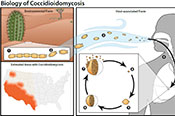
This study is funded by the NIH and aims to further our understanding of Coccidioidomycosis. This is a type of fungal infection that can affect many different body systems (such as the lungs, skin, bones, and/or the nervous system). If you have been diagnosed with any form of Coccidioidomycosis in the past, or would like to participate as a healthy volunteer, please sign up today!
Learn more at the Studypages link
Drought raises concern about elevated risks of Valley fever

With dry conditions plaguing the western United States, UC Davis Health infectious disease experts are concerned about an increase in cases of Valley fever. The fungal infection primarily manifests as a respiratory illness and can cause fever, cough and fatigue.
Valley fever is caused by the fungus Coccidioides, microscopic spores which live in soil in the southwestern parts of the U.S., including California. When the ground is disturbed by wind, construction, farming or other movement, the spores become airborne. They can then be inhaled, infecting the lungs and other parts of the body via the bloodstream.
“The drought in California could play a big role in an escalation of cases of Valley fever,” said George Thompson, a UC Davis infectious diseases specialist and director of the UC Davis Center for Valley Fever. “Dry conditions cause Coccidioides to form into spores and when the wind blows, they become aerosolized, allowing them to be inhaled and infect people's lungs.”
Wildfire smoke can carry microbes that cause infectious diseases
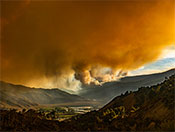
Wildfire smoke contains microbes, a fact that’s often ignored, but one that may have important health repercussions.
In an article to be published December 18, 2020 in Science, Leda Kobziar and George Thompson call the attention of the scientific community to the health impacts of wildfire smoke’s microbial content.
Smoky skies caused by wildland fires are becoming seasonal norms, especially in some parts of the United States and Australia. In 2020, raging wildfires in the Western U.S. have set new records and led to extremely unhealthy or hazardous air quality levels for many weeks in a row.
Risk factors for Valley fever among Hispanic California farmworkers
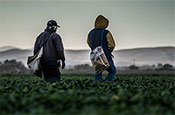
Farmworkers who pick root crops, such as beets and carrots, and those who perform tasks that increase dust exposure might have a higher risk of contracting Valley fever. That was a key research finding discussed by Stephen McCurdy, professor emeritus at the UC Davis Departments of Public Health Sciences and Internal Medicine, during a December 7, 2020 seminar about the deadly fungal infection.
The event, organized by the Western Center for Agricultural Health and Safety (WCAHS), highlighted the risks of certain agricultural practices and crops for Valley fever among Hispanic California farmworkers.
Valley Fever on the rise in California

George Thompson, a UC Davis infectious diseases specialist and director of the UC Davis Center for Valley Fever, met with members of the Congressional Task Force on Coccidioidomycosis to address the rising rates of Valley fever.
In 2017 the U.S. Centers for Disease Control and Prevention (CDC) reported of 14,364 cases of Valley fever, the majority of which were in those who live in Arizona or California. And rates are increasing, especially in California.
Valley Fever cases in California continue to increase

A potentially deadly illness found in the soil and dusty winds of California's Central Valley is on the rise, state health officials say.
Documented cases of Valley Fever rose 11 percent in 2018 — a preliminary total of 7,886 cases compared to 7,090 cases for the same period in 2017, according to the California Department of Public Health. Health officials said final data for 2018 will be available in March.
Valley Fever (coccidioidomycosis) is an illness caused by a fungus found in the soil and dirt in the Central Valley. The fungus thrives in areas of low rainfall, high summer temperatures and moderate winter temperatures. The spores are carried by the wind in dust particles when the desert soil is disturbed.
The Rise of Valley Fever
Two years ago California saw more than 6000 cases of a serious and sometimes fatal airborne infection called Valley Fever. In 2017 that number jumped to more than 8000 cases. That figure will likely rise again this year in California, as well as Arizona, Nevada, New Mexico, Texas and Utah where the fungus that causes Valley Fever is found. If you live in one of those states, you may have had the infection, but didn’t know it. The symptoms are easily confused with pneumonia and it’s commonly misdiagnosed.
An Incurable Disease Is On The Rise In California, And Scientists Say Climate Change Could Cause It To Spread To Much Of The Western US
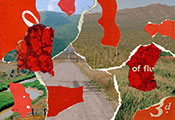 A fungus that thrives in dry soil and warm weather has caused a record number of infections in California. Experts fear climate change will cause it to spread across the western US.
A fungus that thrives in dry soil and warm weather has caused a record number of infections in California. Experts fear climate change will cause it to spread across the western US.
For days Alyssa Gonzalez was bedridden with a fever, a sore throat, loss of appetite, shortness of breath, and a rash all over her body.
The 18-year-old went to the emergency room twice, but doctors couldn’t figure out what was wrong.
Eventually, Gonzalez felt good enough to work, but while taking a customer’s order at a Starbucks one morning this July, the California teen lost her eyesight. She stumbled to the back of the cafe, running into things along the way, and sat down until she could see again.
With climate change, Valley fever spreads in California—and this year could be the worst yet
 Valley fever season starts this month. Most cases surface between September and November, but through August this year more than 5,000 cases were reported in California, putting the state on pace for a new record.
Valley fever season starts this month. Most cases surface between September and November, but through August this year more than 5,000 cases were reported in California, putting the state on pace for a new record.
“We’re seeing a huge increase in new cases in the past two-and-a-half years. It’s striking,” said Ian McHardy, co-director of the Center for Valley Fever at the University of California, Davis. “We’re seeing double and triple the cases. It’s a catastrophic change, and it’s getting worse.”
Valley Fever cases soar in San Joaquin County
 It can be deadly to some, not nearly as severe to others. It's Valley Fever. Also known as coccidioidomycosis, it's a fungal infection.
It can be deadly to some, not nearly as severe to others. It's Valley Fever. Also known as coccidioidomycosis, it's a fungal infection.
It lives in the soil, but its spores can spread by the wind. In San Joaquin County, the fungal disease is growing at levels never seen before.
"So, we have seen a spike in new cases starting as early as 2016. Up until that point we had been seeing relatively low numbers," said Ian McHardy, Co-director for the UC Davis Center for Valley Fever.
SJ sees alarming spike in Valley fever cases
Over the past 20 months, San Joaquin County has seen a significant increase in the number of reported cases of Valley fever, a noncontagious fungal infection found in dry soil that becomes airborne when the ground is disturbed by wind, farming or construction.
The University of California, Davis Center for Valley fever reported this week that the county has experienced a 215 percent increase between the start of 2017 and Aug. 31 this year, based on 72 reported cases in 2017 and 227 reported cases during the first eight months of 2018.
First UC Davis Center for Valley Fever symposium features latest on research and patient care
 The number of reported cases of Valley fever in California has risen to its highest levels in the past two years, with the southern San Joaquin Valley and Central Coast areas most commonly affected.
The number of reported cases of Valley fever in California has risen to its highest levels in the past two years, with the southern San Joaquin Valley and Central Coast areas most commonly affected.
This data will be the foundation for discussions at a Valley fever symposium being held this week at UC Davis, as part of the university’s nation-leading work on this dangerous fungal infection.
Drought, Wildfires Stir Up Valley Fever Fungus, Prompting Travel Alert For California Cities
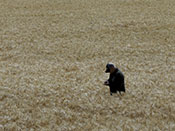 California wildfires are creating smoky, sooty air this summer. But they may also be increasing the amount of Valley Fever going around. A travel alert for the soil-dwelling fungus is in effect for a number of California cities, including Sacramento, Modesto and Redding.
California wildfires are creating smoky, sooty air this summer. But they may also be increasing the amount of Valley Fever going around. A travel alert for the soil-dwelling fungus is in effect for a number of California cities, including Sacramento, Modesto and Redding.
George Thompson with the UC Davis Valley Fever Center says drought conditions and fire-fighting equipment stir up fungus in the soil. The spores then travel by wind, sickening firefighters and the public.
Valley fever: Deadly dust in the West
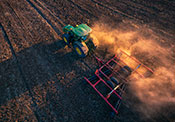 We’ve all heard about this year’s severe flu season, but there’s another “fever” to be aware of that – while not contagious from person to person – has still been a growing source of concern among California public health officials.
We’ve all heard about this year’s severe flu season, but there’s another “fever” to be aware of that – while not contagious from person to person – has still been a growing source of concern among California public health officials.
Reported cases of valley fever still continue to increase in areas of California. According to the California Department of Public Health, reported cases increased by more than a third from 5,704 cases in 2016 to over 7,000 in 2017. The San Joaquin Valley, a major hub for the disease, is where more than 75 percent of the state’s cases occur.
High numbers of new Valley Fever cases puzzle researchers
 Researchers tracking new Valley Fever cases in California have seen a high number of new cases in December and January, when there are typically few cases. Researchers at UC Davis, including Ian McHardy, co-director of the UC Davis Coccidioidomycosis Serology Laboratory, have noted that the number of new cases has persisted through January, when they typically drop off significantly.
Researchers tracking new Valley Fever cases in California have seen a high number of new cases in December and January, when there are typically few cases. Researchers at UC Davis, including Ian McHardy, co-director of the UC Davis Coccidioidomycosis Serology Laboratory, have noted that the number of new cases has persisted through January, when they typically drop off significantly.
Military’s early valley fever research still benefiting public health today
 In Lemoore, almost everyone has a story about valley fever.
In Lemoore, almost everyone has a story about valley fever.
Take Frank Bernhardt, nursing a beer at the Fleet Reserve bar on the edge of town. He first encountered the disease just after moving here in the 1960s. “Years ago, my youngest daughter had it. She just didn't have no energy,” he said.
Nationally televised PBS special on coccidioidomycosis
 UC Davis in valley fever documentary
UC Davis in valley fever documentary
"Deadly Dust - Valley Fever in the West" is a new half-hour ViewFinder documentary produced by KVIE Public Television. The episode premiered March 25 and is available to view online.
Climate factors influencing valley fever
 Climate change is spreading diseases to new areas in the USA, putting millions at risk.
Climate change is spreading diseases to new areas in the USA, putting millions at risk.
Software engineer Andres Chavez is used to doing things quickly, efficiently and correctly. So he knew something was seriously wrong when, on a business trip in 2009, he was so confused he could barely sign a stack of paperwork.
As Valley fever cases spike, experts say awareness is vital
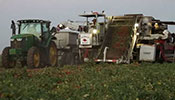 Doctors at UC Davis have seen seen an increase in Valley fever infections. In October 2015, UC Davis doctors identified five cases; last October they had more than 20.
Doctors at UC Davis have seen seen an increase in Valley fever infections. In October 2015, UC Davis doctors identified five cases; last October they had more than 20.
“Essentially about four months ago we noticed a huge spike in positive samples,” said George Thompson, co-director of the Coccidioidomycosis Serology Lab at UC Davis Medical Center.
Drought conditions, travelers can spread Valley fever into California’s northern counties
Valley fever is caused by a species of fungus called coccidioides, which lives in the soil in Southern California, Arizona, Mexico and parts of Central America and can be brought to the surface by construction, agricultural work and other activities that disrupt the terrain, said George Thompson, director of the Coccidioidomycosis Serology Lab at the UC Davis Medical Center.
Valley Fever Dog Vaccine Research Could Help Humans, Too
Randy Ford had never heard of valley fever when he moved to Tucson from Salinas, Calif., with his dog, a reddish brown vizsla named Tyler.
Surviving Valley Fever
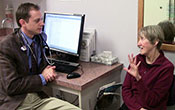 Severe case highlights importance of awareness, expert care
Severe case highlights importance of awareness, expert care
For seven months beginning in the fall of 2010, Virginia Cappel’s medical condition was touch-and-go.
The series of events that would change her life began simply, with flu-like symptoms, which Virginia and her husband Niels initially thought was bronchitis. But about a month later, when they left their home in Davis, Calif., for a vacation in the Midwest, Niels began to notice more ominous signs: disruptions in Virginia’s speech, a slower gait and confusion, such as associating the wrong words with activities.


 Karryn Doyle, CCEP
Karryn Doyle, CCEP